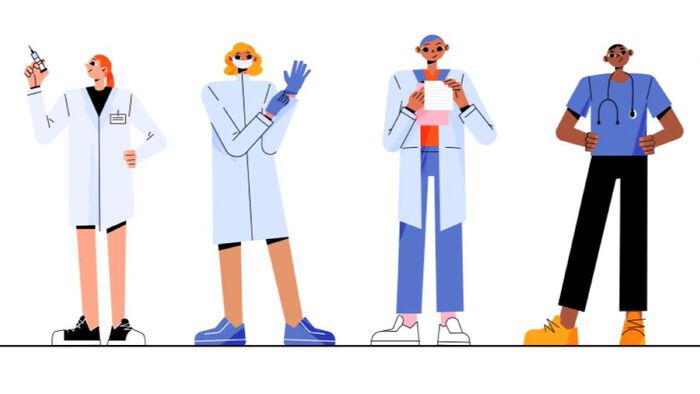Your background is in global health, but in this book you focus mostly on the phenomenon of crowdfunding in the United States. What lessons do you think this book holds for broader global audiences?
Charitable crowdfunding is definitely a global phenomenon, and it tends to thrive in places where patients face high out of pocket costs and social safety nets have been weakened by neoliberalism and austerity. I focus mostly on the US here – both because that’s where these platforms started, and it is a particularly thriving and cutthroat marketplace for crowdfunding – but there are wildly popular platforms around the world in places like India, China, and Kenya. And, of course, the phenomenon of people using apps like WhatsApp to fundraise for health care is even more widespread.
Part of the reason I wanted to write a book about the US from a global health perspective is that the US tends to get ample attention as a major global health innovator and donor, but faces far less scrutiny as a producer and exporter of some of biggest drivers of health inequities. It seemed particularly ironic to me that as the US was promoting Universal Health Coverage in other countries through its aid programs, its own citizens were crowdfunding for basic medical expenses in record numbers. I wanted to bring some of the lessons I’d learned in global health home, in a way, and use them to critically examine this new health financing technology.
In your book you write that you wanted to go “behind the website” to understand what people really experienced with crowdfunding. What did you find there?
There’s no doubt that crowdfunding can produce some very compelling, feel-good stories – and sometimes deeply impact people’s lives for the better. But for every viral, feel-good campaign on sites like GoFundMe, there are tens of thousands that raise little or no money at all. For example, more than a third of campaigns for health needs in the US seem to have raised no money – zero dollars – at all.
In my research with all kinds of crowdfunders – from the very successful to the very unsuccessful – I found that the stories beneath the surface of these campaigns were much more complicated. When we look at a campaign to help out an uninsured person with cancer, for example, we are often seeing a story about the triumph of online generosity, but what are we not seeing? We are not seeing all the campaigns like this one that are not successful, and more fundamentally, we are being distracted from a story about the structural issues that contribute to uninsurance. It became clear to me that there was an important story that needed to be told about these complex, sometimes contradictory, experiences of crowdfunding. What are people seeking when they turn to crowdfunding, and what sorts of ambiguous, complicated, morally-challenging situations do they find there? And most importantly, where is crowdfunding taking us as a society, as it becomes our instinctual means of responding to crises both large and small?
What are the stories we don’t hear about crowdfunding experiences? Can you share some?
In the book I profile people like Trevor, a single father from Arkansas who was in deep financial distress, but who also felt a ton of shame about asking for help. He was tech-savvy and spent a lot of time trying to figure out how crowdfunding worked before he launched his campaign. But what he took from that research was a sense that he was not as deserving of help as other people, whose stories were more tragic, more urgent, than his. He felt so much shame about asking for help that he created his campaign and then never shared it with anyone he knew. In fact, that sense of shame is really common – and particularly common among marginalized users of platforms like GoFundMe. “I’m swallowing my pride” is one of the most frequent sentiments expressed by crowdfunders. But the distressing reality here is that people who have the most complex needs, who are the most marginalized, are often feeling the least deserving of help from the ‘digital crowd.’
At the same time, a lot of people who are going viral on sites like these are actually quite privileged and well connected. I spoke with people like Chelsea, who ran a very successful campaign for her co-worker; both of them were well-known media producers, and their campaign got a lot of traction. But Chelsea, like many successful crowdfunders, attributed the campaign’s success to not to these factors, but to her co-worker just being a “good guy” – at one point she even compared his reputation to a form of “insurance”! So what I think this demonstrates is that crowdfunding is bringing about some pretty profound cultural shifts in how we think about deservingness, charity, and how we allocate health resources.
You argue in the book that these cultural shifts create what you call “moral toxicities.” Can you explain what you mean by that?
Building on the work of oncologists and health economists who have identified the financial burdens of illness as an added “financial toxicity” that impacts health outcomes, this book develops the concept of “moral toxicities” to describe the entrenched social mores that crowdfunding feeds on and powerfully reinforces, and that undermine efforts to build more equitable health systems. The book’s chapters explore specific moral toxicities – from ideas about the “deserving poor” and selective deservingness, to false meritocracies and downstream tech solutionism – to explain crowdfunding’s impacts not just on people’s access to care, but on our social worlds. I call these moral toxicities, because, like toxins, they suffuse our environments and can harm our health in numerous ways. Like environmental toxins, these harms are much more likely to accumulate in, and impact, already vulnerable and marginalized populations.
Dominant values like rugged individualism and selective deservingness powerfully fuel the popularity and spread of crowdfunding. And as crowdfunding spreads and becomes more popular, it reinforces these values. Ironically, these are the exact values that undermine support for better social safety nets and more equitable health systems. Achieving health equity and universal health care relies on societies accepting some basic moral premises about shared risk, collective responsibility, universal entitlement, and the value of investing in upstream prevention for everyone. Crowdfunding endorses and amplifies content that runs completely counter to those basic moral premises.
So what are the lessons of the book for scholars interested in the political determinants of health?
My work spans the fields of public health and anthropology, and in doing so, it recognizes that culture, moral values, and social phenomena are core forces that shape the political determinants of health. Crowdfunding, as I note, is reshaping some of those cultural practices and values as it becomes an engrained way of responding to needs and crises. But as I argue in the book, crowdfunding is also changing the way people exercise political agency. More and more we’re seeing crowdfunding campaigns mobilized as the primary response to things like climate disasters, wars, pandemics, and acts of violence. Donating money to these causes has become a primary way that we publicly express outrage, opposition, empathy. As GoFundMe’s CEO has put it, the website has become the “internet’s take action button.”
But if you look at what these campaigns accomplish, they’re often very reactive and depoliticized. They’re also what we think of in public health as deeply “downstream” interventions. Nothing about a campaign for school shooting victims in the US is going to help prevent the next one. It helps the survivors, maybe it helps us feel a bit less guilty, but it does nothing to address the root causes of gun violence. Crowdfunding can be used as an organizing tool, but far more often it distracts us from the root of our problems, and the power we have to collectively address them. So I worry that this “take action” button of the internet has actually diverted our political energies and attention away from how we might actually take action, in real life, to address these big determinants of health.
People have a genuine desire to help in a lot of these cases. What advice do you offer people, or organizations, who are seeking a different way to mobilize support?
I don’t dispute that a lot of people use crowdfunding with very good intentions, and sometimes even quite selflessly. And taken together, a lot of people across the world are trying to use crowdfunding to help each other out – we can’t overlook the power of those efforts. I profile some really remarkable stories of well-intentioned crowdfunding in the book, like Victoria, who lost both her parents in the early months of the COVID pandemic but then started a campaign to feed her neighbors in the Bronx. There’s no doubt, as well, that crowdfunding has been an essential organizing and support tool, particularly for some in marginalized communities, like those in disability or trans communities. But even in these cases, the inequitable dynamics persist. Victoria’s campaign only raised a few hundred dollars, while nearby in Manhattan, campaigns to support high-end restaurants were earning tens of thousands of dollars. And research shows that trans crowdfunding struggles with the same racial and gender biases that we see elsewhere, and overall is less successful than that for other medical issues.
So what should we do? The last chapter of the book offers three templates for action. The first template is the one we most commonly encounter when it comes to technology, the realm of what I call “tweaks and fixes.” I explain why these are tempting but unlikely to dramatically improve things. The second template for action that I offer aims to make crowdfunding—at least in the ways it is commonly used to address acute needs and crises—less ubiquitous. This involves much more extensive efforts of “repair and remaking”: larger projects that aim to change the structural systems of market-based health and charity that create the moral and financial toxicities in which crowdfunding thrives. These are the large and necessary projects of creating fairer health futures, but they are also daunting, lengthy, and resource intensive. As a final template for action, I offer suggestions for “living in the meanwhile”—everyday efforts of working toward meaning, connection, and justice while slow-moving progress toward larger shifts continues. I think it’s in this third space that many of us can find traction for our work – a place where we can both help people address their immediate needs and also continue that slow, messy work of struggling for more just health futures.





